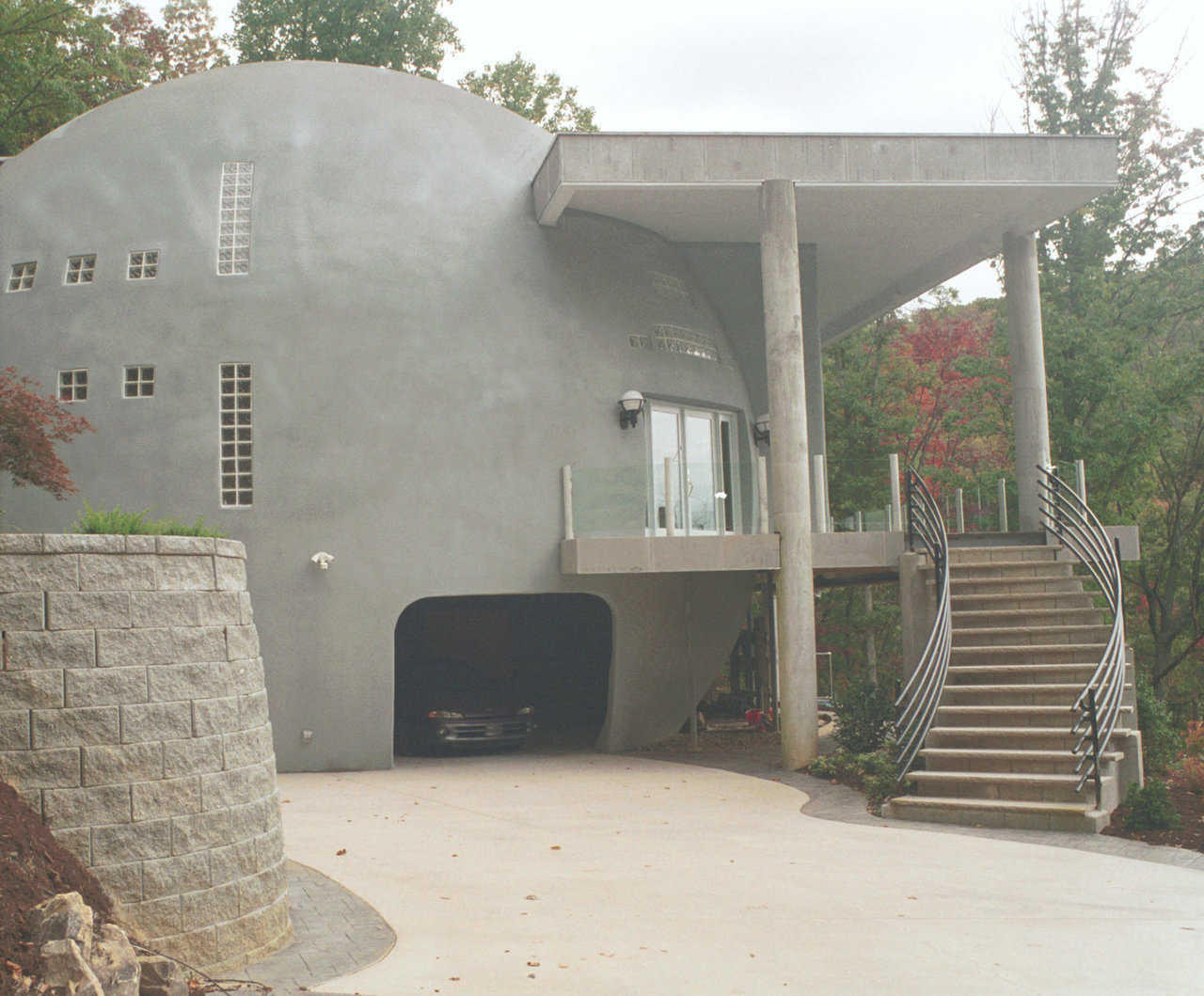Story time in the treetops? – 2000
That’s the fantasylike environment four-year-old Meili Kaslik enjoys. When it’s Meili’s story time, she and her mom Melanie cuddle into comfy chairs in a cozy, glass-enclosed nook perching above the treetops at the Monolithic Dome home they call Cloud Hidden.
Jim Kaslik, Meili’s dad, says, "Originally this nook, cantilevered off the dome, was planned as a breakfast area, but we changed our minds and made it into a reading nook.
“Now, between stories Melanie and Meili can look out toward North Carolina’s Blue Ridge Parkway, into a forest area that includes public land, down into the valley or into the treetops.”
Cloud Hidden
In April 1998, the Kasliks began excavating the home site for Cloud Hidden, an over-the-center, six-segment caterpillar, built on a 2′ × 2′ footer.
After 2 1/2 years of diligent work, the Kasliks were able to move into their spectacular dome-home that looks like it’s carved into the 45-degree-sloped mountain, on which it sits some 500 feet above the valley.
At its center or equator which is 14 feet above ground, Cloud Hidden is 85’ long, 46’ wide and 37’ tall. Its three levels include 5300 square feet of heated living space, 2000 square feet of unheated living space and 1000 square feet in an elevated, two-level, stamped-concrete porch.
That porch embraces the entire front of the dome at its main or second level and circles into a private porch off the master bedroom at the third level.
Cloud Hidden’s first-level basement contains the garage, workshop, storage, playroom and laundry. Its main floor encompasses a living room with a 25’ ceiling and a sunken conversation area, dining room, library, kitchen, pantry and bathroom.
A spacious master suite and bath, two large bedrooms flanking a second bathroom, and a hallway balcony overlooking the living room make up the top floor.
Jim says, "We named it Cloud Hidden because we’re in an area of frequent, morning, valley fogs, and the tops of the mountains are actually above the cloud layer.
“Our dome is normally visible from many miles away, but on these mornings it is cloud-hidden. And from the perspective of the dome, looking out onto the top surface of the clouds for as far as you can see is like taking in our own private piece of heaven.
“The views are stunning,” he continues. "Hawks soar overhead, and you can hear owls at night.
Going Monolithic
“For all these reasons, we chose a Monolithic Dome. Nothing else would give us the interior spaces, wide-open access to the views, and a feeling of security on a rather precipitous site.”
The Kasliks discovered Monolithic Domes through the Internet. Jim recalls, "I was researching geodesics, followed a link to Monolithic, saw ‘Eye of the Storm,’ and was blown away.
“I called to Melanie. She took one look and pulled out a picture of the ‘Eye’ that she had taken a couple of years earlier while visiting Charleston. So it took us about a minute to agree that that’s what we wanted. Then, it took us about four months with computer aided drafting software designing it, and here we are.”
Careful engineering
Even for a Monolithic Dome, Cloud Hidden sports an unusual size and shape. It’s over-the-center. Its six caterpillar segments have narrow, 10-foot centers but huge openings.
One opening consists of three, side-by-side-by-side, 8′ × 15′ cutout arches, fronted by a 30′ × 16′ window wall, that take full advantage of the view. The dome’s backside has an 18’ earthberm. And the dome has an extreme porch.
Jim says, “These features required careful engineering, so we worked closely with Dr. Arnold Wilson (Monolithic’s consulting engineer) to make sure every detail was proper.”
A geothermal system
Cloud Hidden uses no fossil fuels. Instead, a geothermal system keeps the home comfortably and economically warm or cool.
Geothermal heat pumps, also called water-source or ground-source, are electrically powered systems that use the earth’s near-constant temperature to provide heating and cooling.
The Kasliks have radiant floor heating (RFH), consisting of 6500’ of polyethylene tubing running throughout the concrete foundation of their home. In the winter, their geothermal system circulates heated water through the RFH tubes and brings warmth to the rooms.
During the summer, the system uses chilled water to cool the home’s interior with a mini-duct, high-velocity air conditioning system.
An economic system
Jim says that the superior insulation of a Monolithic Dome and the geothermal system allowed them to purchase a smaller, more economical heat pump. “Heat pumps come in different sizes,” he says. "Ours is a 54,000 BTU (British thermal unit) per hour.
“That’s equivalent to 4 1/2 tons of air conditioning. We estimate that our heat pump probably is one-third the size we would need if this were a frame house. We know of a frame house of similar size and location that has three times the heating and cooling capacity of our home.
“Here’s another advantage of geothermal,” Jim continues. "We can calculate in advance just what running the geothermal will cost. For example, right now if we ran it continually, nonstop, for a month it would not cost more than $95 to heat this place.
“That’s pretty cheap for a house this size. Plus, the dome has proven itself so efficient and responsive to solar gain that we don’t anticipate ever needing to run it nonstop.”
Cloud Hidden sits on a mountainside and has a dramatic southern exposure. Jim says, "The trees are lower than we are so they don’t obstruct the sun that beats down all day long. But we still hardly run our air conditioning.
“This past summer, we ran it a total of three weekends during periods of sustained high temperatures and no cloud cover. That would cool the dome over the weekend. During the week, we wouldn’t run the air, and the dome would slowly, four degrees at most, heat up, and we’d cool it again on the weekend.”
Jim has compared that to the experience of a neighbor with an identically sized and positioned conventional house. “I know it’s not a scientific test,” he says, “but the neighbor tells me that the temperature in her house rises about 15 degrees.”
While they use air conditioning sparingly, the Kasliks run a dehumidifier virtually all summer. “We’d have 50% humidity without it. That keeps the inside a comfortable 50% relative humidity. In the winter the humidity drops naturally to around 30%,” Jim says. They also use ceiling fans.
A blending of grays
The Kasliks blended a variety of grays, accented with bright colors, for both the interior and exterior of their dome. On the inside, the flat walls are natural plaster and the dome walls are a muted gray, with a slight hint of blue or green depending on how the light hits. Furniture and accessories provide accent, and the bamboo flooring used throughout adds a warm, golden glow.
On the outside, Jim sprayed two coats of a neutral gray, synthetic stucco over the Airform, using a handheld hopper gun attached to an air hose.
Landscaping
Wild flowers, seeded over the slopes, burst into accent colors. They change from blue bachelor buttons in the spring to a variety of white, yellow, orange and red flowers during the summer, and finally cycle into purple blooms in the fall.
Following their landscaper’s advice, the Kasliks hydro-seeded Love Grass over the remaining area. It’s a thin-blade grass that grows thick, falls into graceful wisps and needs no mowing – a definite advantage for homeowners living on a 45-degree slope.
Finally, to enhance the look of a dome rising out of the boulders, the Kasliks recycled boulders they excavated during the preparation of their home site into a 120’ long, 10’ high wall that stretches along the front of the dome.
Jim says, "Our excavator used two machines and chains to lift each boulder, some as heavy as four tons. We would spin each by hand and inspect it to decide which side we wanted facing out.
“Then we’d create a secure base and coax it into place. The wall looks like it’s been there forever.”
Home and Garden Television (HGTV)- 2001
Understandably, Cloud Hidden, with its dream-home, over-the-treetops ambience has attracted its share of attention. Recently, HGTV, the cable network that, in May 1998, produced a segment on the “Eye of the Storm,” featuring commentary by Monolithic’s President David B. South, traveled to North Carolina to film Cloud Hidden.
Fine Homebuilding Magazine
In its Aug/Sep 2003 issue, Fine Homebuilding Magazine (FHB) did a feature article, titled “A Disasterproof Home” and devoted its entire back cover to the Monolithic Dome process and Cloud Hidden.
FHB is the premier publication of Taunton Press, a leading publisher of magazines and books about home-building, woodworking, gardening, and similar topics. The Chicago Tribune ranked FHB as one of the top 15 magazines, out of 17,500 published in the country. It has a circulation over 300,000 and a reputation for promoting quality construction methods.
“FHB provides instant credibility to anything they cover,” said Jim, who’s been a subscriber since the early 80’s. “For them to give such an important placement in the magazine to a house I designed and built is a tremendous honor.” Jim adds, “And their editors did a great job of explaining the process of building a dome and describing its advantages in completely normal terms, so that as an industry, we no longer need to be qualified with adjectives like ‘extreme’ and ‘outrageous’.”
Quality Home Comfort Award -2003
Contracting Business, the leading publication for HVAC (heating, venting, air conditioning) contractors and company owners, awarded a Monolithic Dome its 2003 Quality Home Comfort Award!
The winning contractor is Guy Cox, owner of GLC Services in Canton, NC and the winning house is Cloud Hidden. The house and contractor won the “New Construction, 4001-6000 sf” category.
The article makes several interesting observations that will sound familiar to dome aficionados:
- These domes, by their very nature, are naturally passive solar.
- Orientation to the sun, tempered with appropriate overhangs, is a key to optimizing the passive solar effect.
- It is easy for HVAC contractors to oversize a system in a Monolithic Dome if they’re not used to dealing with the mass of concrete.
- Proper HVAC system design has to consider the load, the curves, the tightness, and the acoustics of a dome. Anything less, and you sacrifice comfort.
That all these factors were considered in the design of the HVAC system for Cloud Hidden is not surprising when you learn that Guy Cox had prior experience building domes. That meant time could be spent optimizing the design of the system rather than worrying if the contractor was going to provide too much or too little heat and A/C.
As Jim explains it, the design of the house and the HVAC system should be a cooperative process: “When a house design doesn’t account for the HVAC considerations, the owners end up paying too much either in the cost of an excessive HVAC system, or in a lack of comfort. When I design a house, I try to account for all the factors that influence the client’s comfort, including sun angles, window placement, type of heating and cooling, equipment noise, energy costs, and a host of other factors. Finding a great contractor like Guy makes the process so much easier, because he understands how to properly design and size the system to get the right balance for temperature, humidity, and air quality.”
Guy adds that while he was the lead contractor, he didn’t work alone. “To verify the load of the house – how much heating and how much cooling it will need throughout the year – I worked with three other companies. Carolina Power and Light, the local power company, visited the house during construction and provided their own load calculations. Wirsbo, the leading supplier of PEX tubing for radiant floor heating, also made a site visit and provided engineering. And Unico, which makes a super-quiet cooling system, also visited the site and provided guidance. Jim made whatever modifications to the design that we requested to make the equipment fit and work in the best way. Then together with my partner Chris Kannenberg, who’s an expert with all forms of alternative energy, we were able to install and balance the system.”
The process must have worked, because Cloud Hidden is able to operate with a fraction of the HVAC system size required by the other QHCA winners. Using a ground source heat pump as the source for both heating and cooling, this dome is able to condition nearly 6000 square feet with only 4 tons of capacity. By contrast, a house of the same size built with conventional construction methods would typically require about 10-to-12 tons of capacity. That represents a huge savings, both in initial capital cost and monthly utility costs.
Guy adds, “I think what’s most gratifying is that even though we took a risk by sizing the system so small, it has turned out to be the perfect size. It still surprises my fellow contractors when I tell them how much space we’re conditioning with that small of a system.”
Cloud Hidden Sold – 2007
“There’s always a market for quality!” Jim said when he contacted Monolithic and let us know that he and Melanie had sold Cloud Hidden.
According to Jim, they loved Cloud Hidden and were not planning to move. Then, a change that might delight many homeowners began troubling the Kasliks.
“We decided to leave because of what was happening in the market. Our real estate values went up,” Jim said. “I mean they really, really went up fast and so did our taxes. They tripled in five years, and we knew they would go up again in the next few years.”
In 2006 the Kasliks listed Cloud Hidden with Sheelah Clarkson, an agency specializing in luxury homes in the Asheville, North Carolina area.
The house was listed for $1,650,000. It sold within about nine months, in the winter, for more than its appraised value.
“That’s why I say that when a home is done with quality, it will sell – no matter what,” Jim reiterated. “The focus has got to be on quality, workmanship and detail.”
The Sales Strategy
Sheelah Clarkson and the Kasliks decided on a marketing strategy that presented Cloud Hidden’s elegance. On her website Clarkson called it “… sculptural space … the perfection of form and function” and “Asheville’s most architecturally significant home ….”
The word “dome” was never used. “We didn’t hide the shape and we didn’t promote it. Personally, I feel that (promoting shape) takes people down the wrong track,” Jim said. "It’s a luxury home period. It’s contemporary styling. It’s a house, and each house has its own characteristics, and ours happened to have some really good ones – as the whole genre does.
“I wanted to focus on the livability, comfort and special characteristics, rather than just shape,” he continued.
The realtor agreed. But they did show dozens of outside and inside photos, so prospective buyers knew what Cloud Hidden looked like before their visit.
The Sale
Jim said that right from the start Clarkson treated Cloud Hidden as a unique, luxury property. She did not post signs leading to it, nor did she hold an open house.
Instead and in addition to her extensive, detailed website description, Clarkson persuaded Architectural Digest to feature Cloud Hidden in its Sept. 2006 issue.
“It got into a monthly column that’s called something like ’Editor’s Choice Estates for Sale’ that highlights just 10 estates from around the world that are for sale, all in a million to whatever price,” Jim said. “Some are absolutely gargantuan. We were toward the more modest side, of course. But they only do 8 to 10 of these from the whole world, so to actually get a listing in there was phenomenal.”
That listing attracted the buyers of Cloud Hidden.
The Inspections
Understandably, those buyers insisted on professional inspections of the dome’s structural construction, its heating, plumbing and electrical.
“They had all kinds of engineers and inspectors crawling all over the place,” Jim said. "And they always got a great report back. The realtor told me that every inspector reported back to her by saying something like, ’That’s the best built house I’ve ever had a chance to look at.’
“It took that for the buyers to be comfortable enough to commit, and that was fine with us,” Jim concluded.
Note: The Kasliks now live near Winston-Salem, NC in a traditional home, but they miss dome living and plan to build another in the future. Meanwhile, Jim continues doing business as Cloud Hidden Designs, LLC at www.cloudhidden.org or (336) 480-5581.
It Was the Worst of Times; It Was the Best of Times – 1998
Note: This part of the article is Jim’s personal account of what he and Melanie went through about the time that construction on Cloud Hidden began.
Inflating an Airform is a peak experience. Anyone who’s seen ten thousand square feet of fabric unfurl, billow, and take shape as their future home won’t soon forget the experience. Inflating the Airform for Cloud Hidden was made all the more indelible in my mind because it was done under the watchful eyes of an HGTV audience in an episode of “Dream Builders.” No pressure there!
Yet, in our elation at witnessing the beginnings of our dome home, we were blissfully unaware of the trials ahead. Trouble started the next day when someone in the neighborhood went ballistic at the sight of the Airform and the prospect of a dome. It did not matter to them that we had met all the requirements of the development and the county. Nor did it matter that we had all of the necessary approvals. All that mattered was that someone didn’t like it and chose to tell us so with insults, invectives and threats.
George Paul was our dome constructor. He’s as kind and gentle a man as I have ever met. We arranged a meeting in no-man’s land with the antagonist to discuss domes and to explain the series of changes that take place between inflating an Airform and completing the residence. But George’s kind mannerisms had no effect, and the threat of community ridicule and legal action was laid upon us.
Editor’s Note: Once completed, Cloud Hidden significantly increased the area’s property values and quieted all protests!
That afternoon I sat outside the dome documenting the conversation on my Apple Powerbook for my attorney. My wife was on-site as well, taking pictures and video of the dome for posterity. George gave a yell that the tow truck had arrived to haul his mobile workshop up our steep mountain driveway. We stopped what we were doing and went to help.
We watched and helped for the next half hour as the truck struggled to position the rig near the dome. Then, just when we thought we were set, the tow truck swung wide in the wrong direction and ran directly over the new camera, the new video camera, and a tape recorder, crushing them into the mud.
An hour later the rain that had plagued us throughout excavation returned again with a flash thunderstorm. Only after we had been in the shelter of the dome for a half hour did I remember the Powerbook was outside. I raced out to get it, but was too late. It was sitting in a puddle – fried.
Melanie and I sat on a rock outside, assessing our misery and wondering what we had gotten ourselves into – all the while trying not to cry. We had only just begun, the karma was bad and getting worse. At our lowest point, while sitting outside and feeling sorry for ourselves, a beautiful ladybug flew toward us and landed on Melanie’s knee. Ladybugs are a symbol of good luck for people trying to adopt children from China. This fortuitous sighting of one ladybug is all that kept us going that day.
The next day we returned to the dome site in late morning, after taking the video camera to the repair shop. As I stepped out of the truck, I saw an envelope stuck to the airlock door with a hunting knife. Fearing all sorts of horrors, I had Melanie stay in the truck while I investigated. Then George wandered over with a smile on his face and said I had received a phone call and the message was on the door under the knife. It read, “Call Joannie.” I thought to myself, “Joannie? Who’s Joannie?” Then it registered.
Melanie called Joannie at our adoption agency and heard for the first time that we were going to be parents. Our seven-month-old daughter was waiting for us in China, and all we needed to do was travel there and meet her!
I took a picture of the phone call with the muddy, yet unbroken camera. The video camera was eventually repaired. The motherboard on the Powerbook was replaced. My attorney made the unpleasant neighbor disappear. And we completed our beautiful dome home. Now, we happily live there with our precious daughter, a bunch of great neighbors, and several thousand ladybugs.
Note: This article combines information from five articles published by Monolithic in 2000-2007.
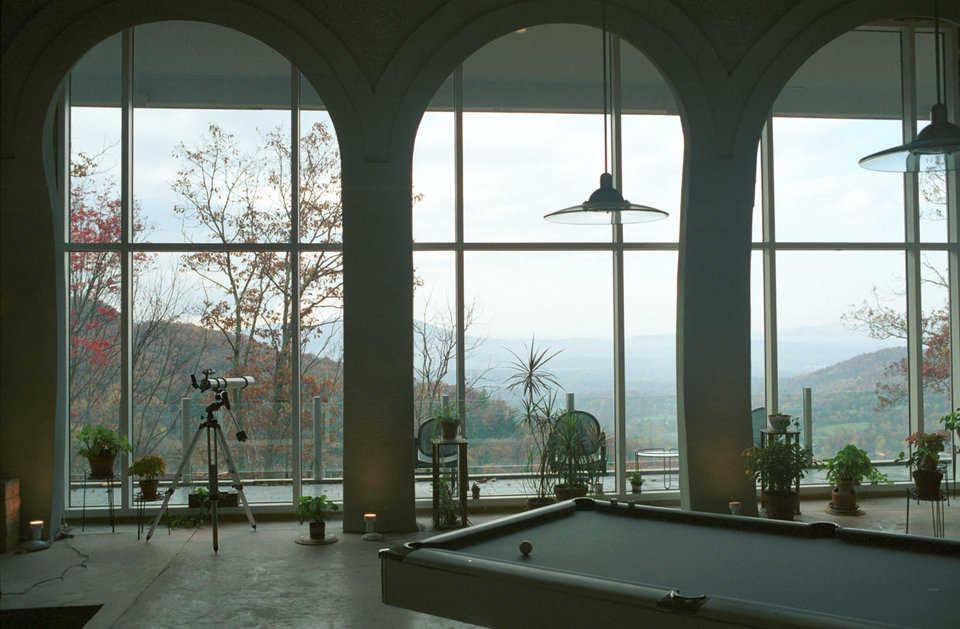
Luxury Living — Cloud Hidden’s three levels include 5300 square feet of heated living space, 2000 square feet of unheated living space and 1000 square feet in an elevated, two-level, stamped concrete porch.
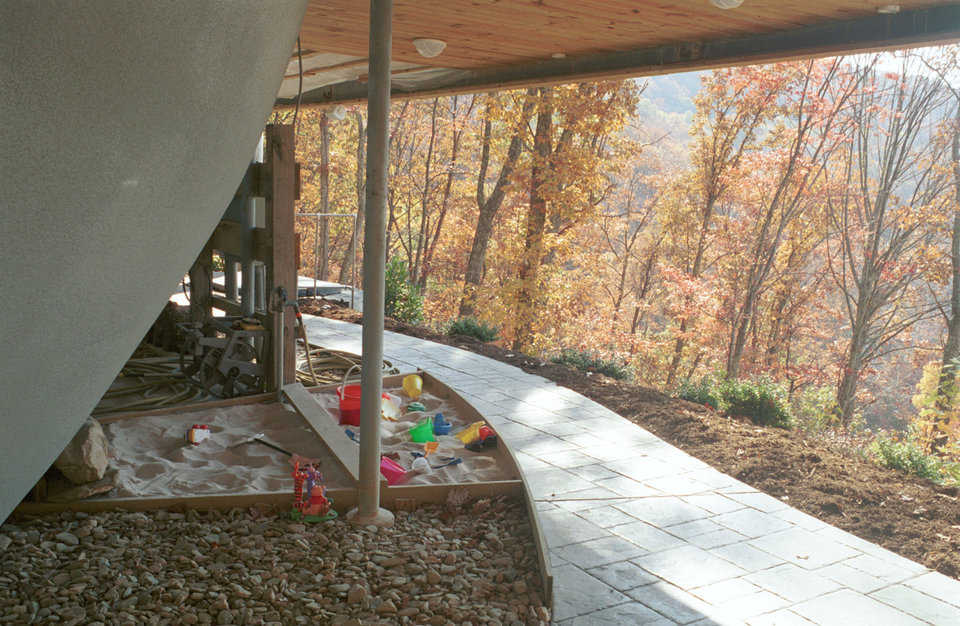
Play Area — The protected space under the dome is Meili’s very own play area, complete with sandbox.
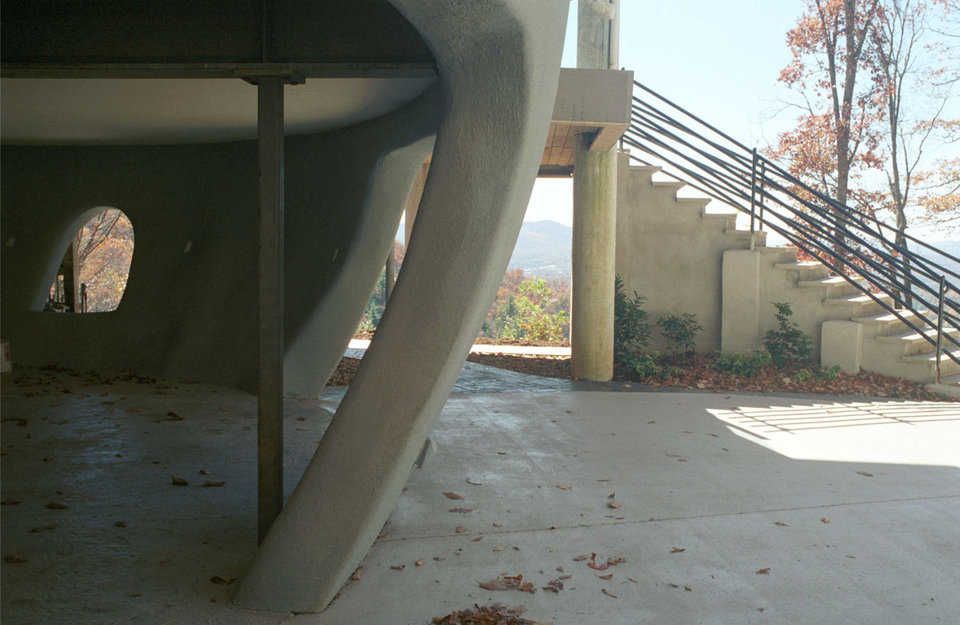
Now that’s strong! — The large cut-outs in the garage show the strength of Monolithic’s building method.
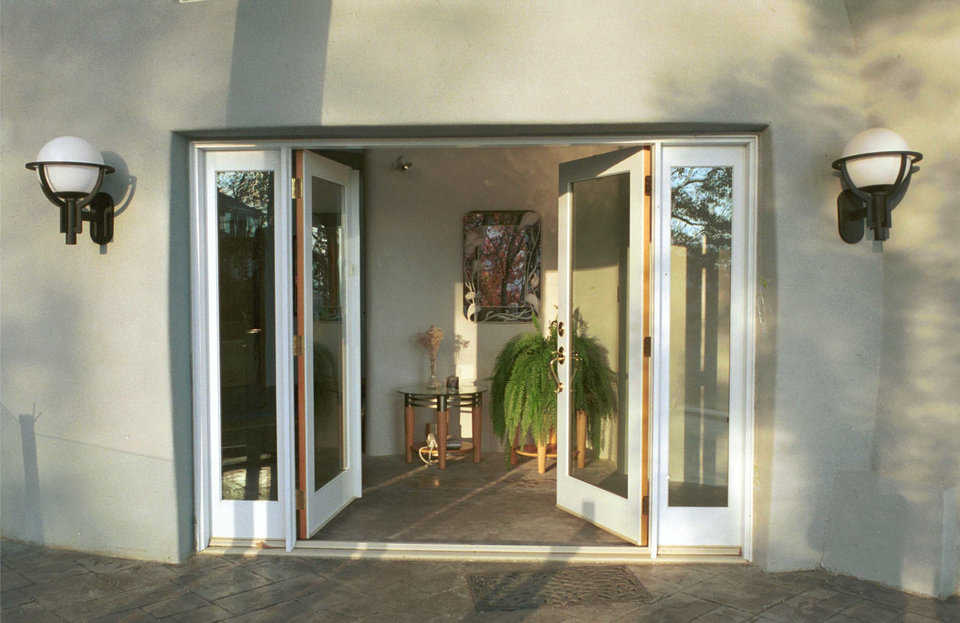
Welcome! — Main entryway features double glass doors. Stamped concrete porch surrounds all exterior levels of the dome.
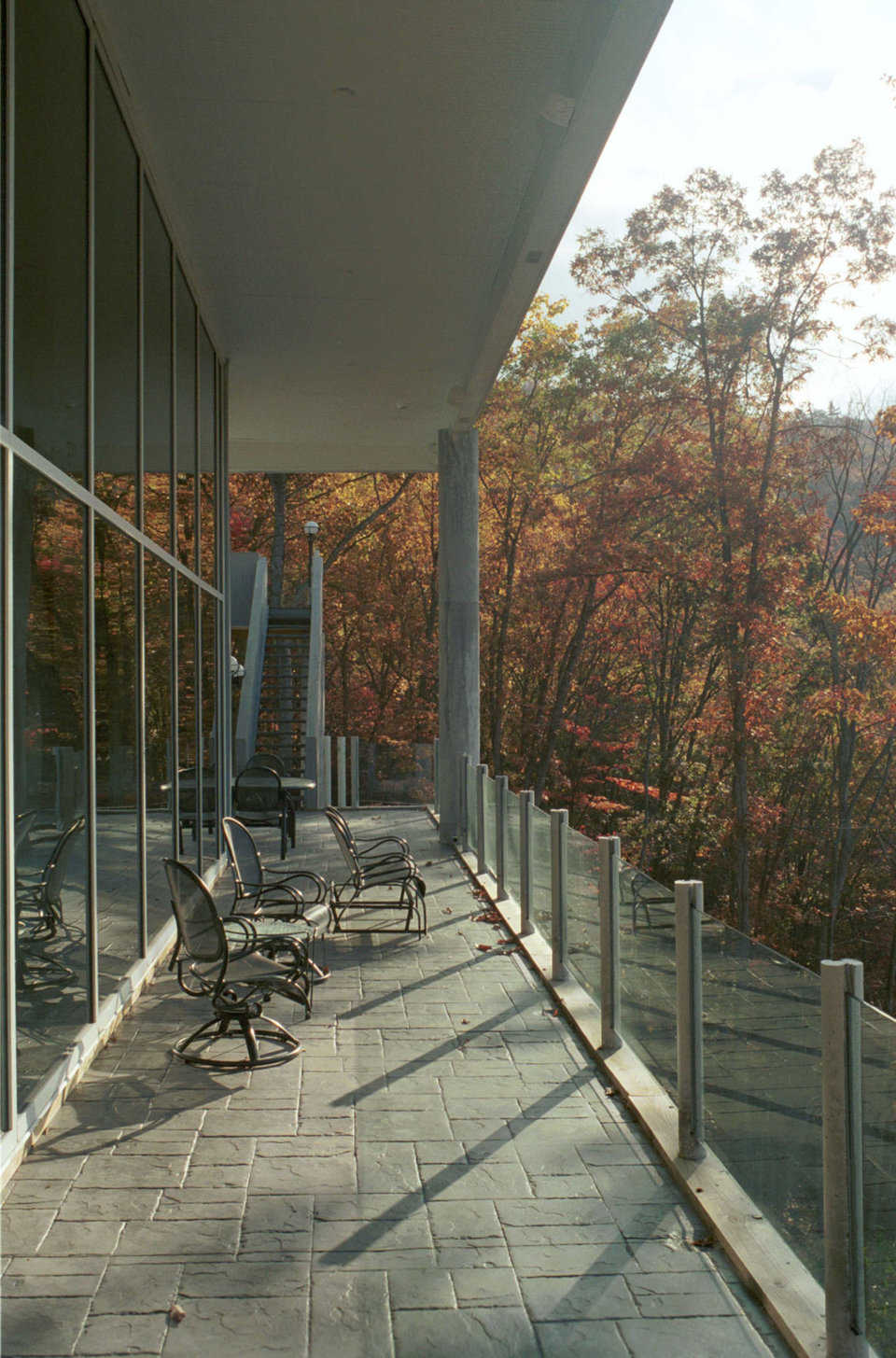
What a view! — The stamped concrete porch embraces the entire front of the dome at its main or second level and circles into a private porch off the master bedroom at the third level.
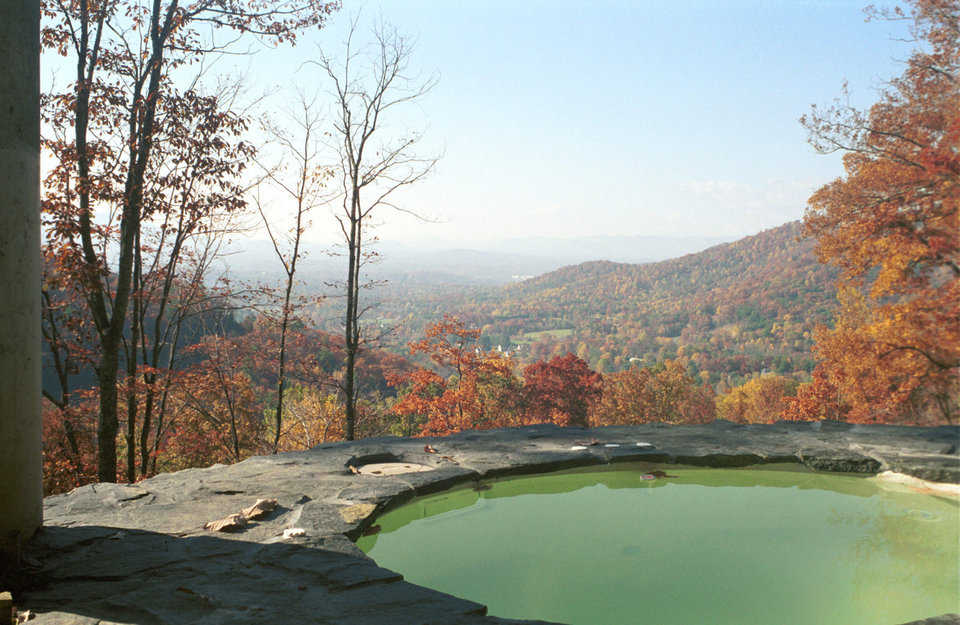
Total privacy! — Outdoor hot tub is built right into the hillside and surrounded by granite. The spa was created using a reverse Monolithic building method.
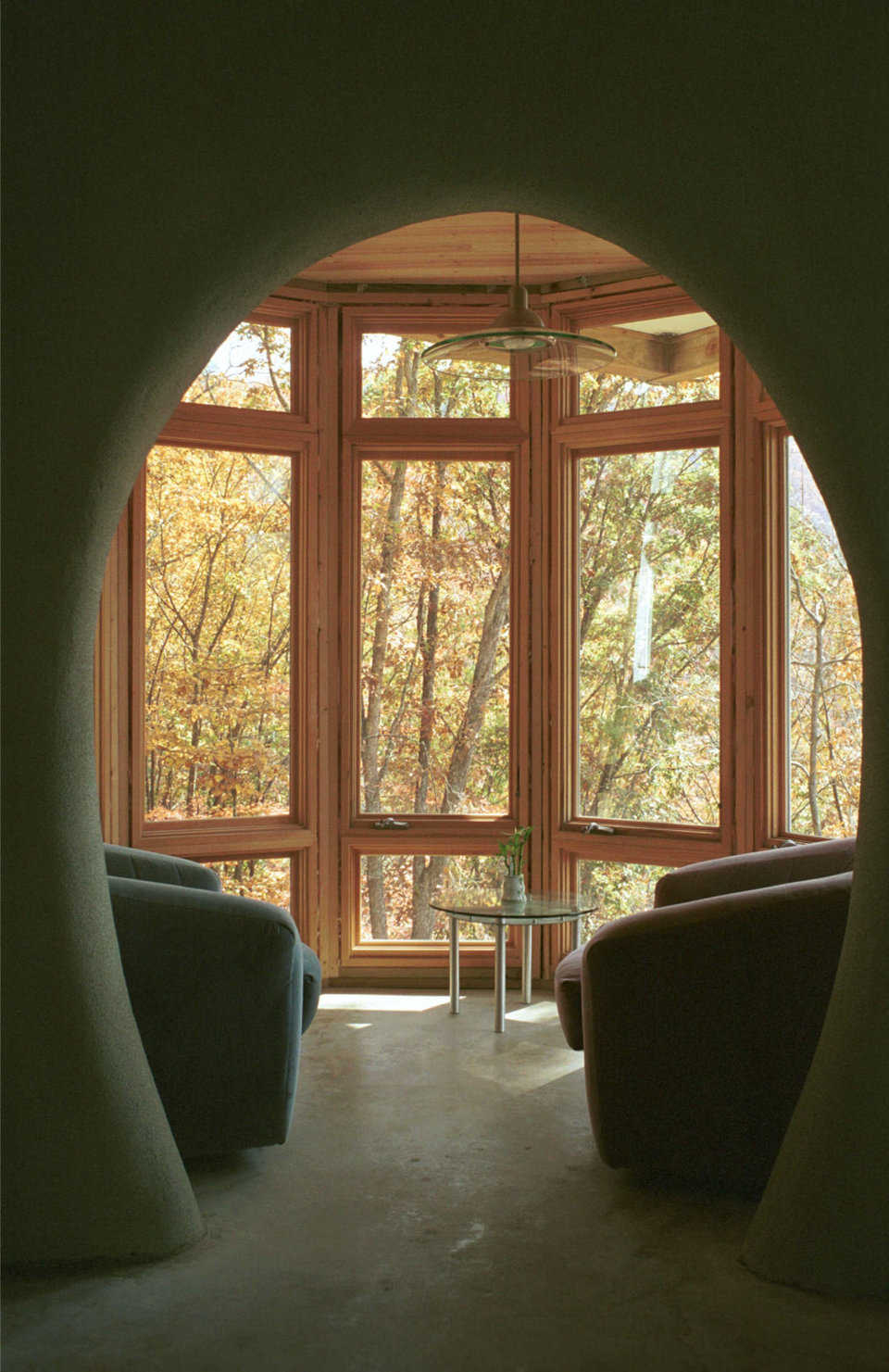
Favorite reading nook — This nook, cantilevered off the dome, was originally planned as a breakfast area, but is now a favorite spot for reading.
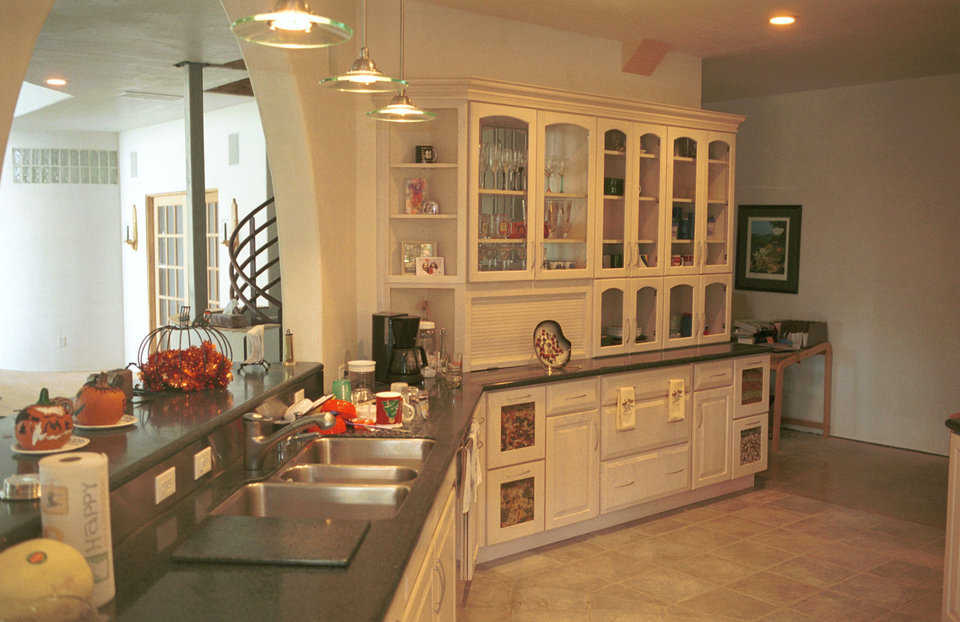
Spacious kitchen — Excess storage makes this kitchen extremely functional. The archway overlooks the central living area.
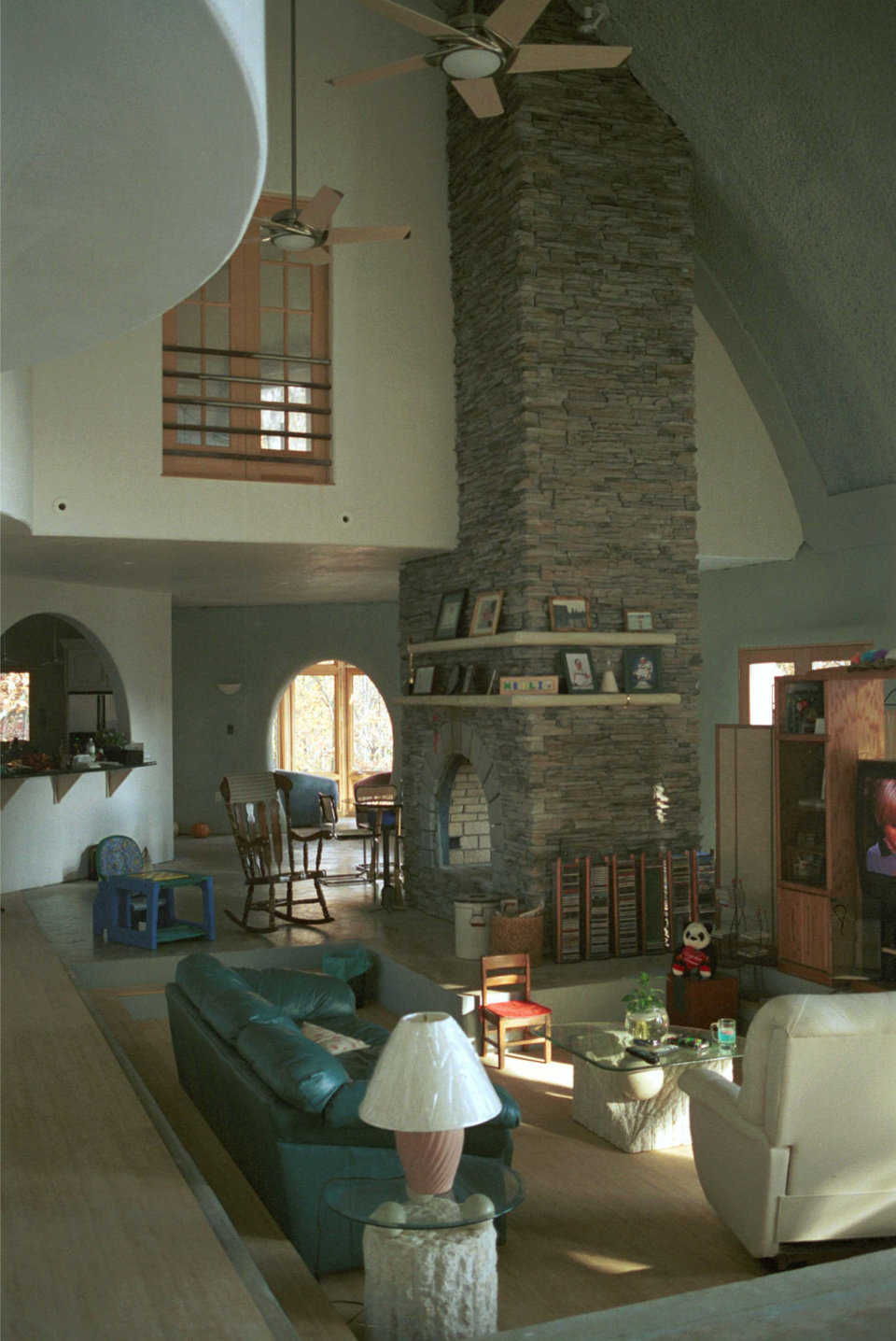
Central living area — Cozy, sunken, central living area features a Cultured Stone fireplace (faux stone). Jim laid about 700 square feet of the stone and never saw two pieces that looked alike — providing an authentic stone appearance. Fireplace is 8′ × 4′ and 25’ tall.
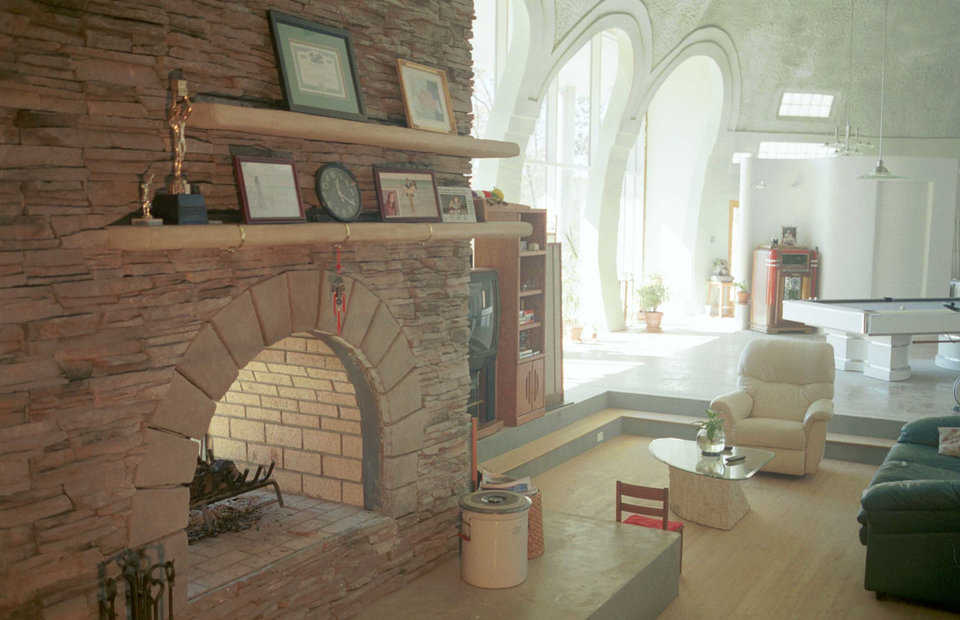
Window wall — Large, store-front windows open onto a gorgeous view. Window wall is 30’ wide and 16’ high. Arches are 8’ wide and 15’ high. Glass panels measure 5′ × 8′. Jim hand-formed the fireplace mantel using a stuccolike material.
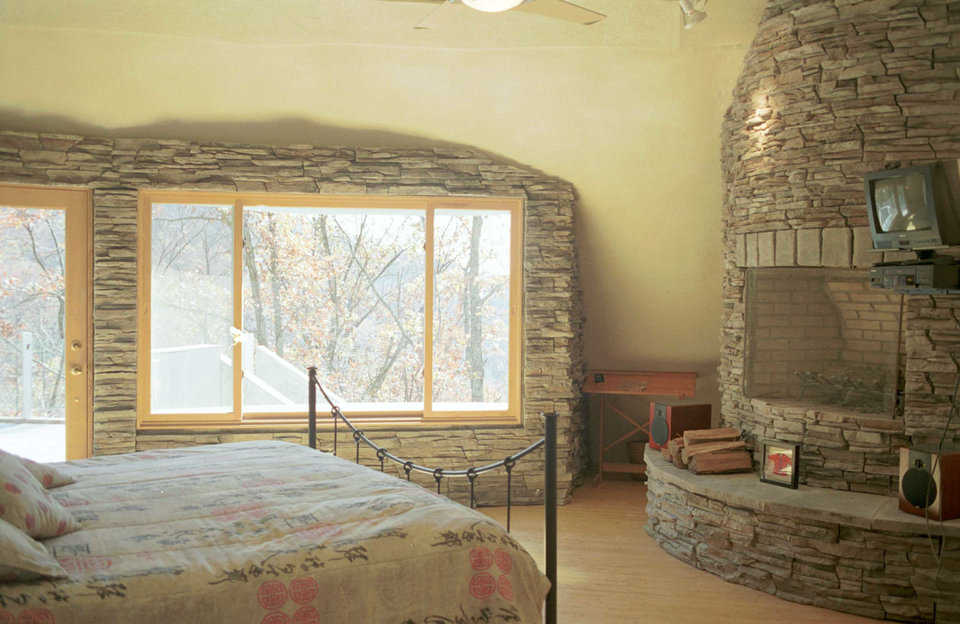
Romantic! — Master suite has a fireplace! It shares a chimney with the lower-level fireplace but requires a separate flue. A partial wall divides bath and bedroom. Electronically controlled skylight provides star-gazing opportunities and features a rain sensor that sutomatically closes the skylight.
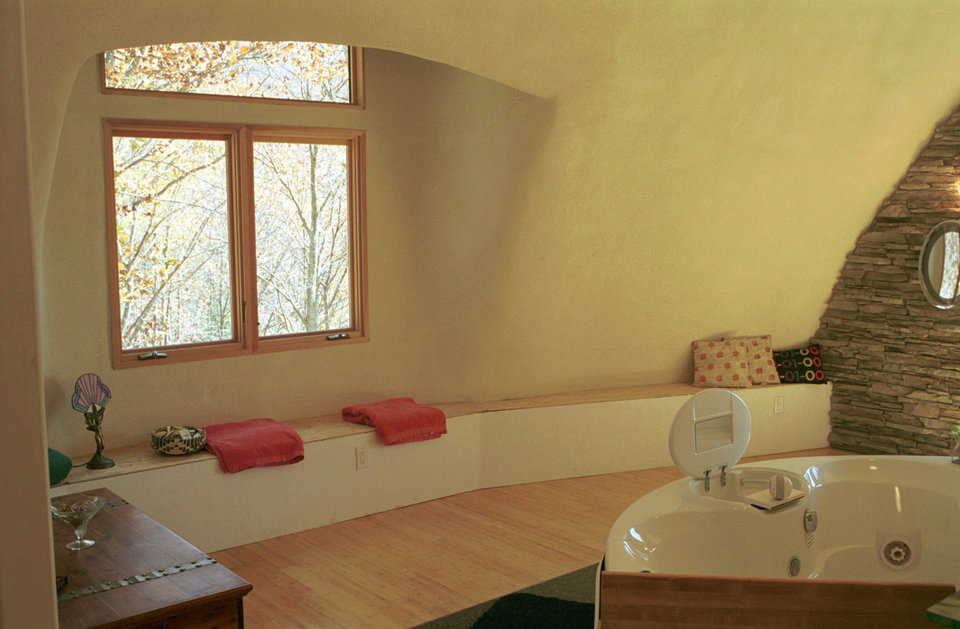
Relaxing! — A wide window bench in the master bath utilizes space and creates a comfortable relaxing area.
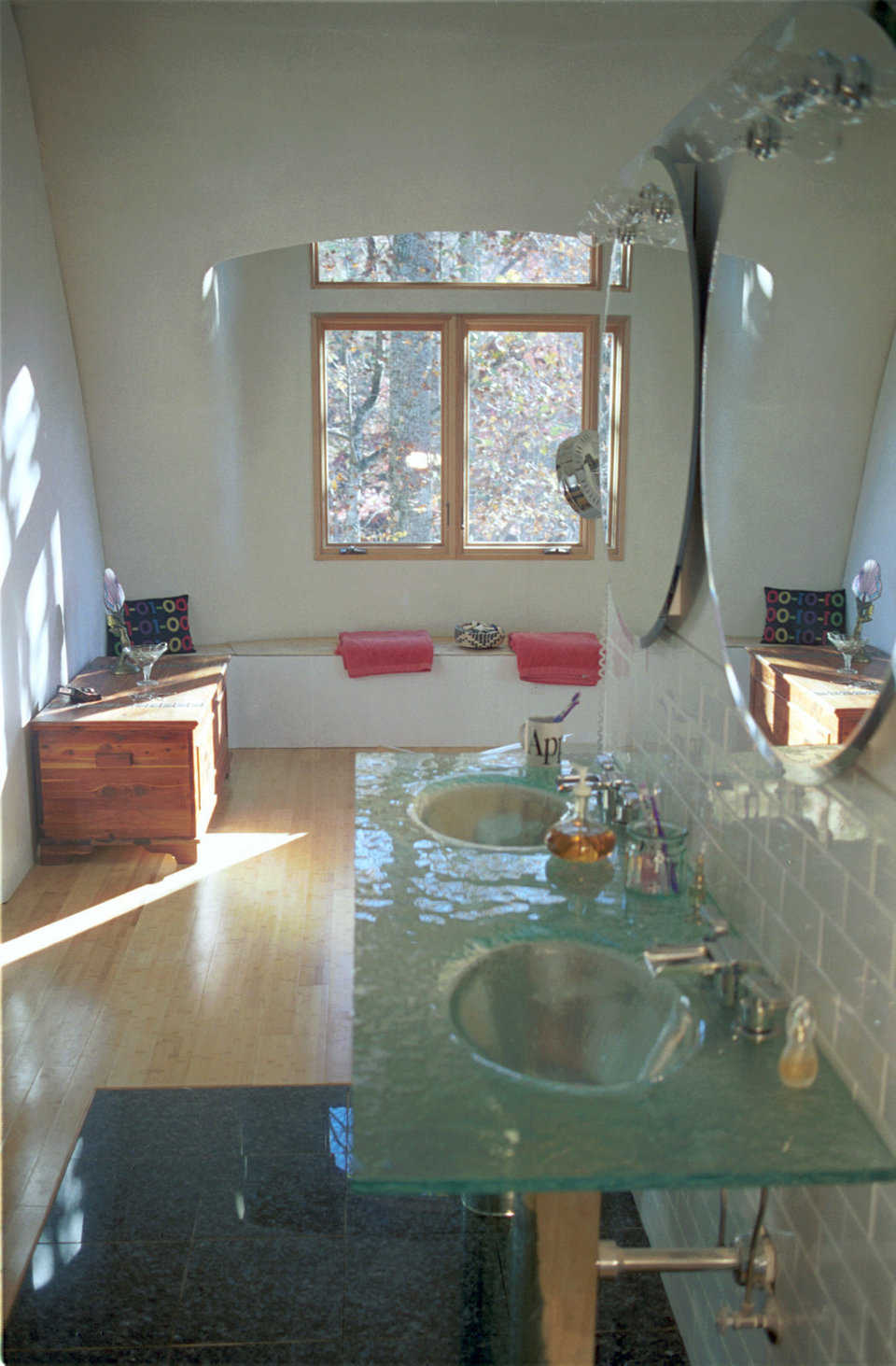
Elegance! — Master bath has a glass double-vanity with waterfall faucets imported from Canada.
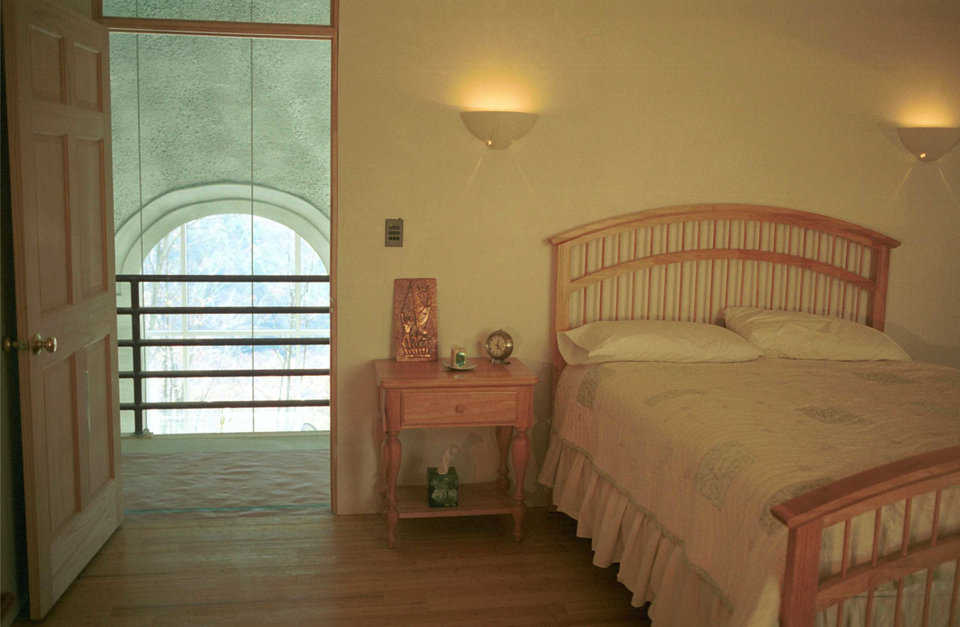
Guest bedroom — It’s entered off the balcony that overlooks the central living area.
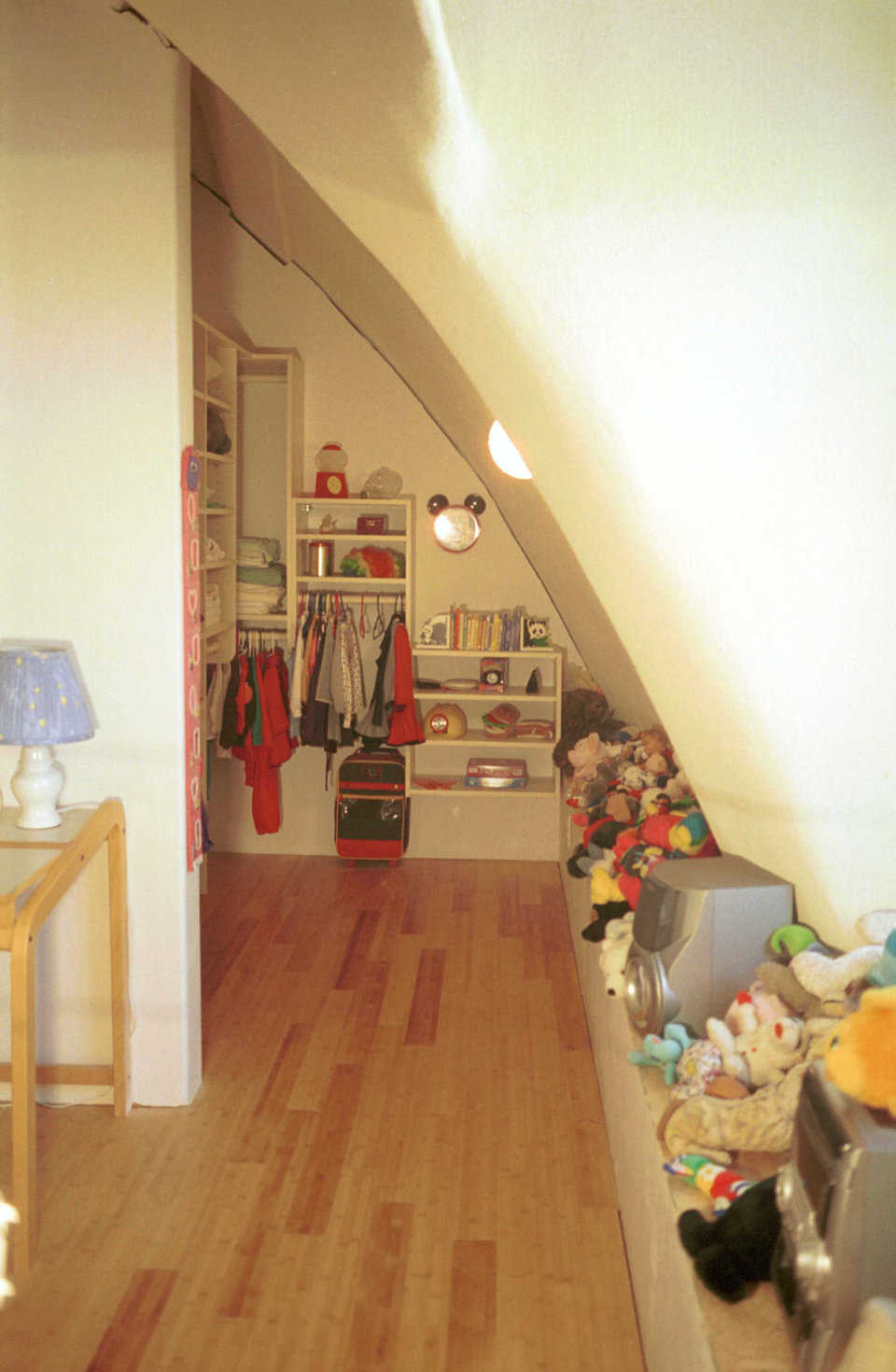
Meili’s stuff — She has ample storage space for clothes, books and toys.
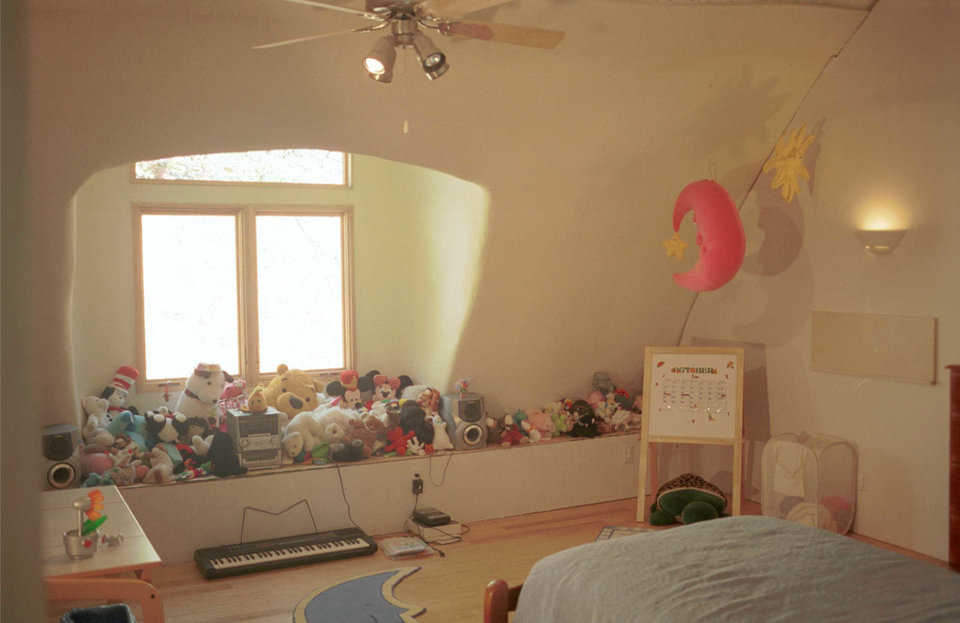
Celestial theme — Meili sleeps among the stars, moon and planets.
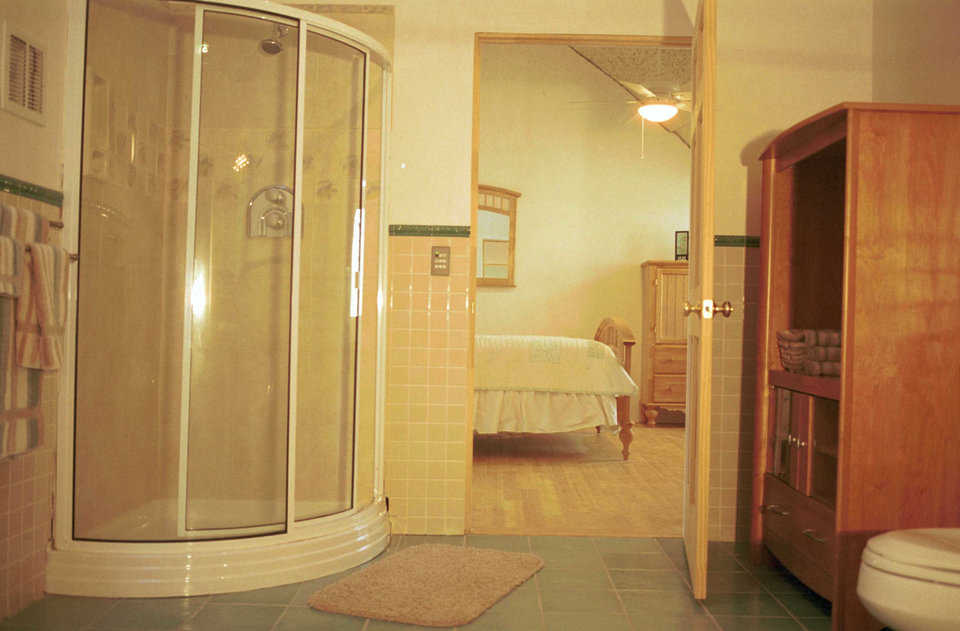
Luxurious comfort! — Guest bedroom features a large, glass-enclosed shower with Italian, ceramic tile, custom detailing. A large armoire sits in the space behind the door.
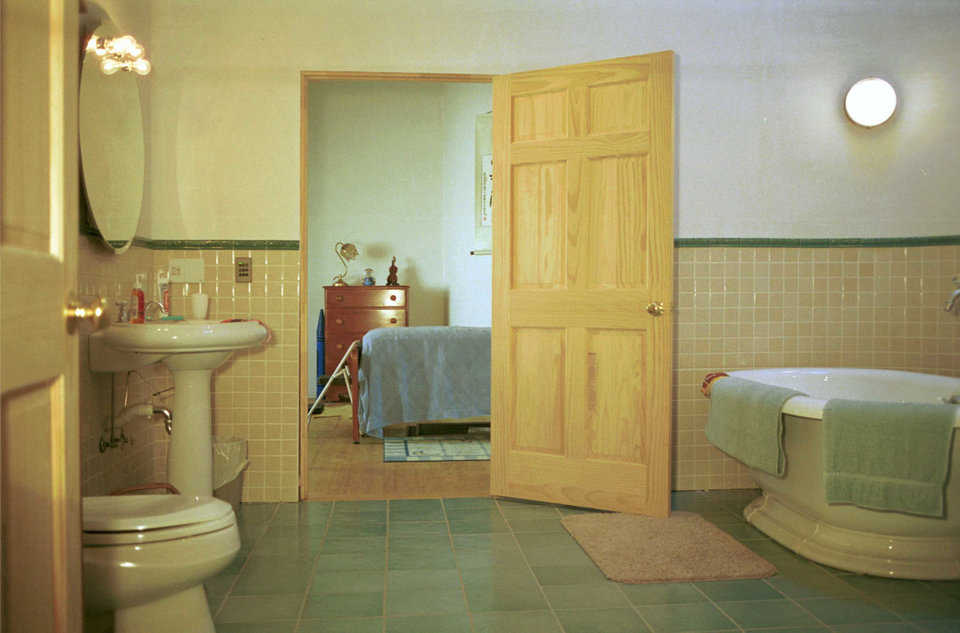
Large bathroom — It can be accessed from Meili’s or the guest bedroom.
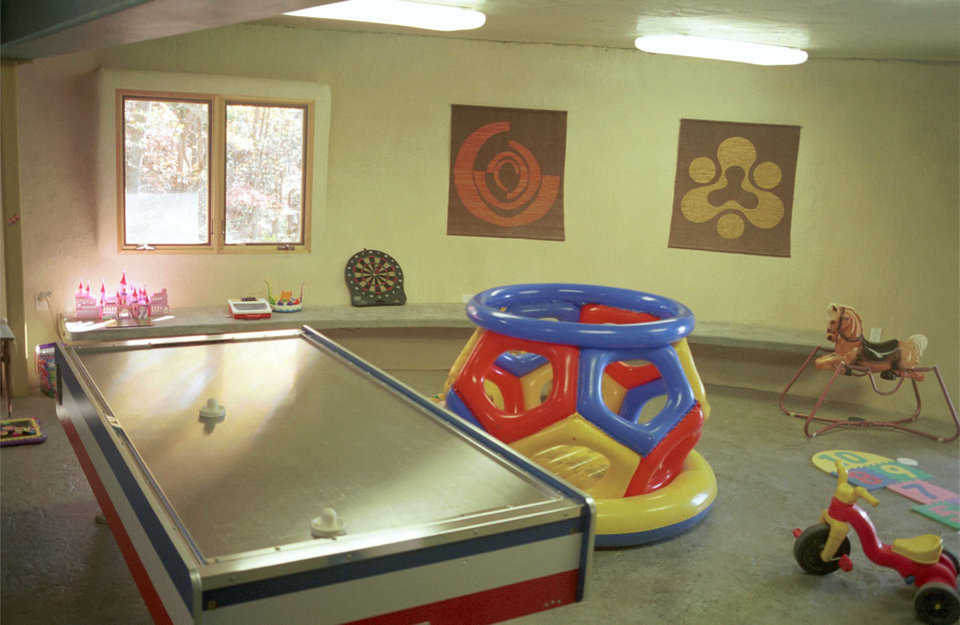
Playroom — The playroom has concrete benches hanging off the dome wall (cantilever). Floor features a polymer overlay, with color and pattern.
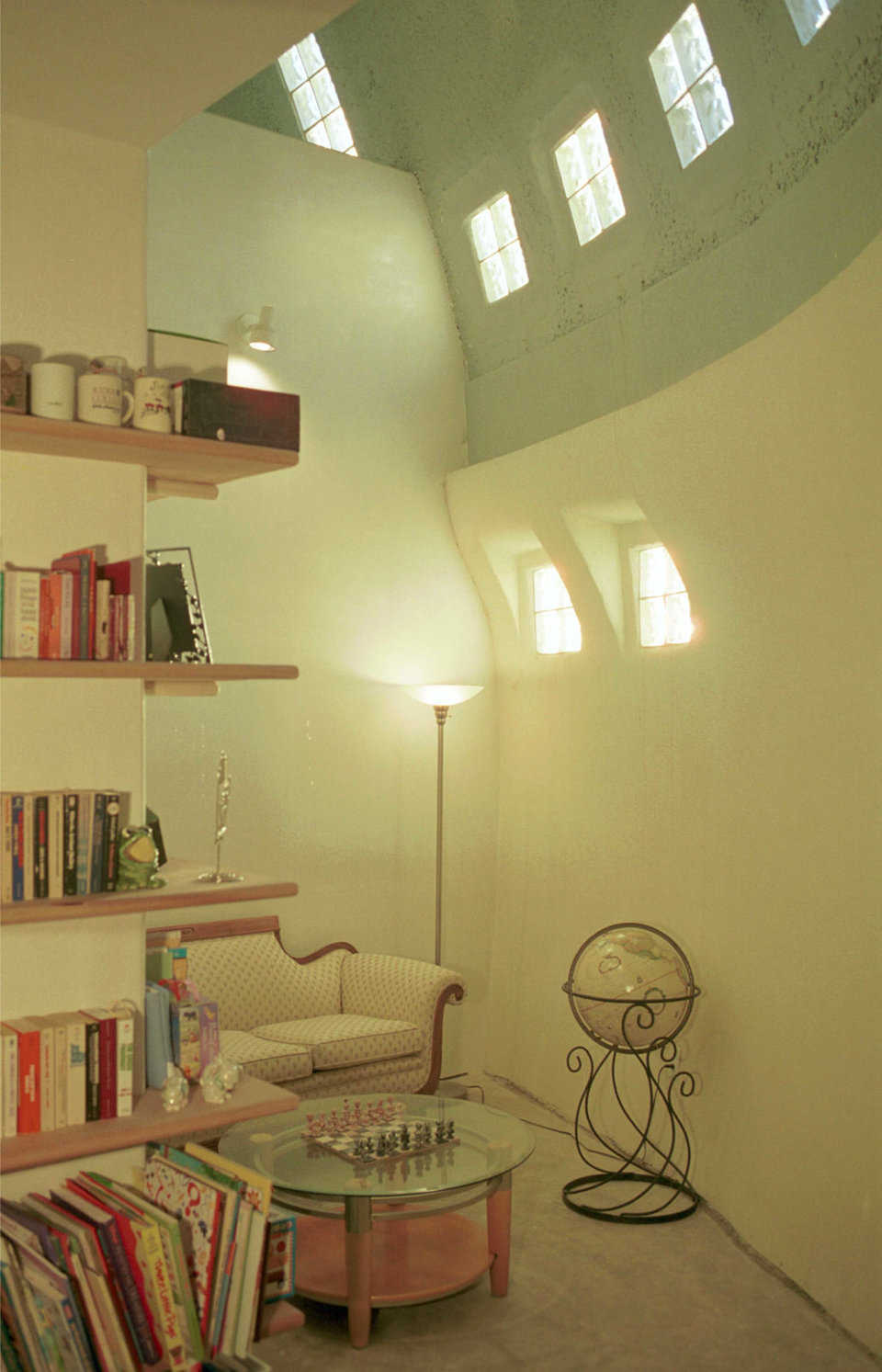
Library — The high ceiling has glass blocks that provide light for this U-shaped library with a secluded reading area.
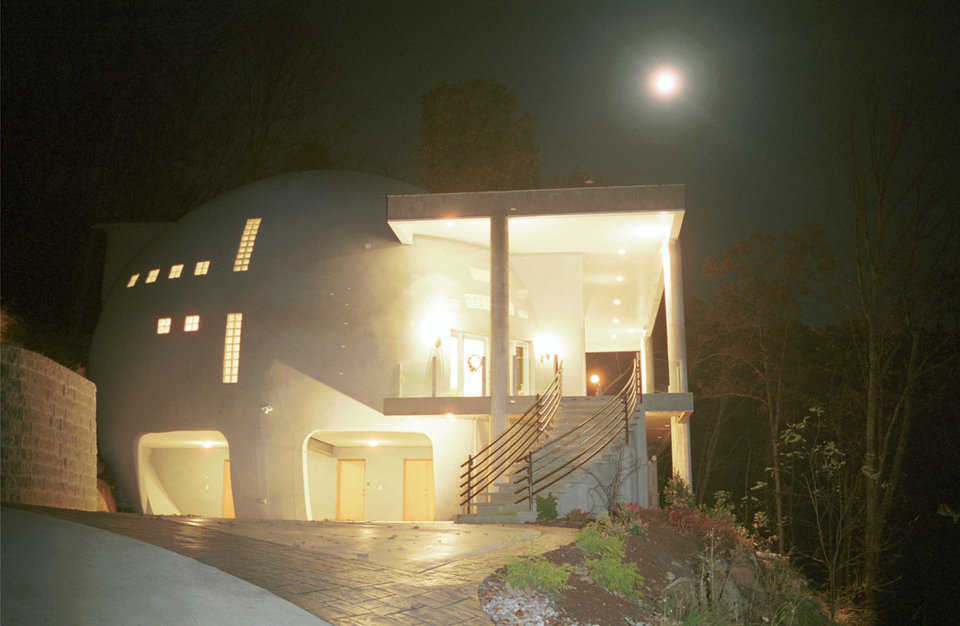
Moon rising over Cloud Hidden — This night-time shot captures the glow and warmth of the home and overcome the myth that domes are cold and cavelike.
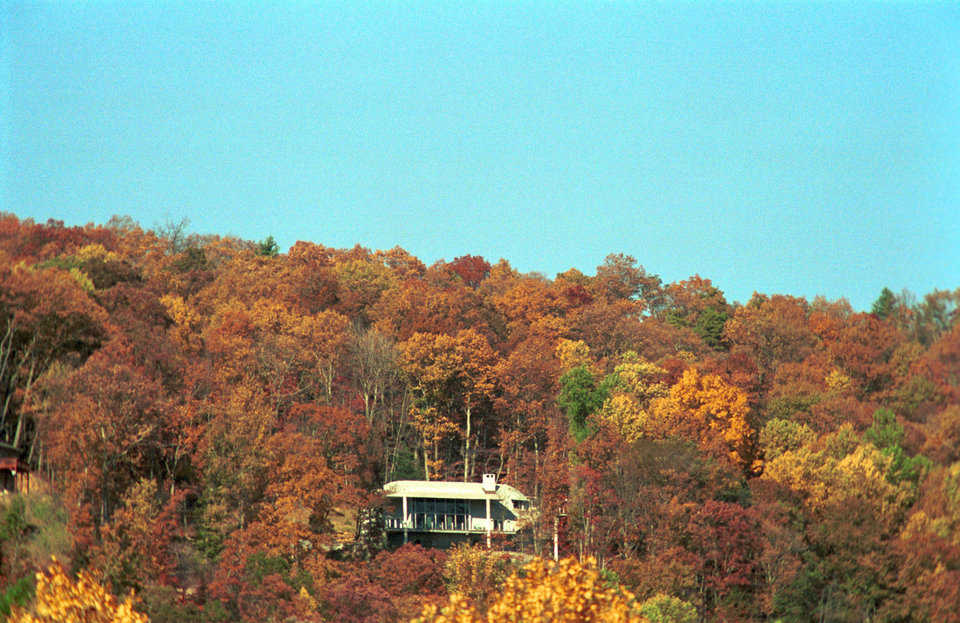
Among the treetops — Cloud Hidden was built on a 3/4 acre site overlooking the Blue Ridge Parkway that was anything but easy to get to.
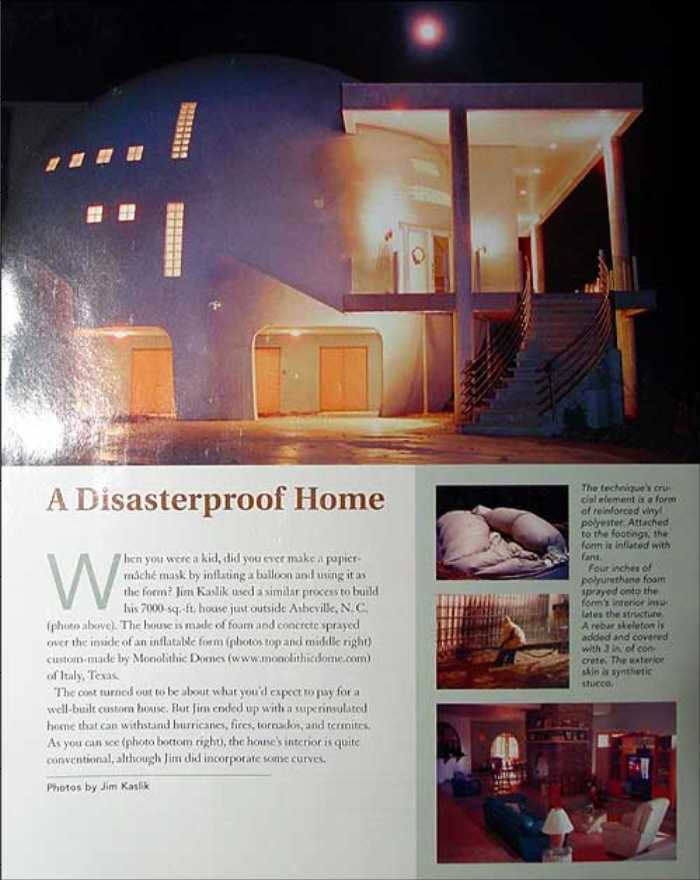
On the cover — In its Aug/Sep 2003 issue, Fine Homebuilding Magazine did a feature article and devoted its back cover to Cloud Hidden, as a Monolithic Dome dream home.
